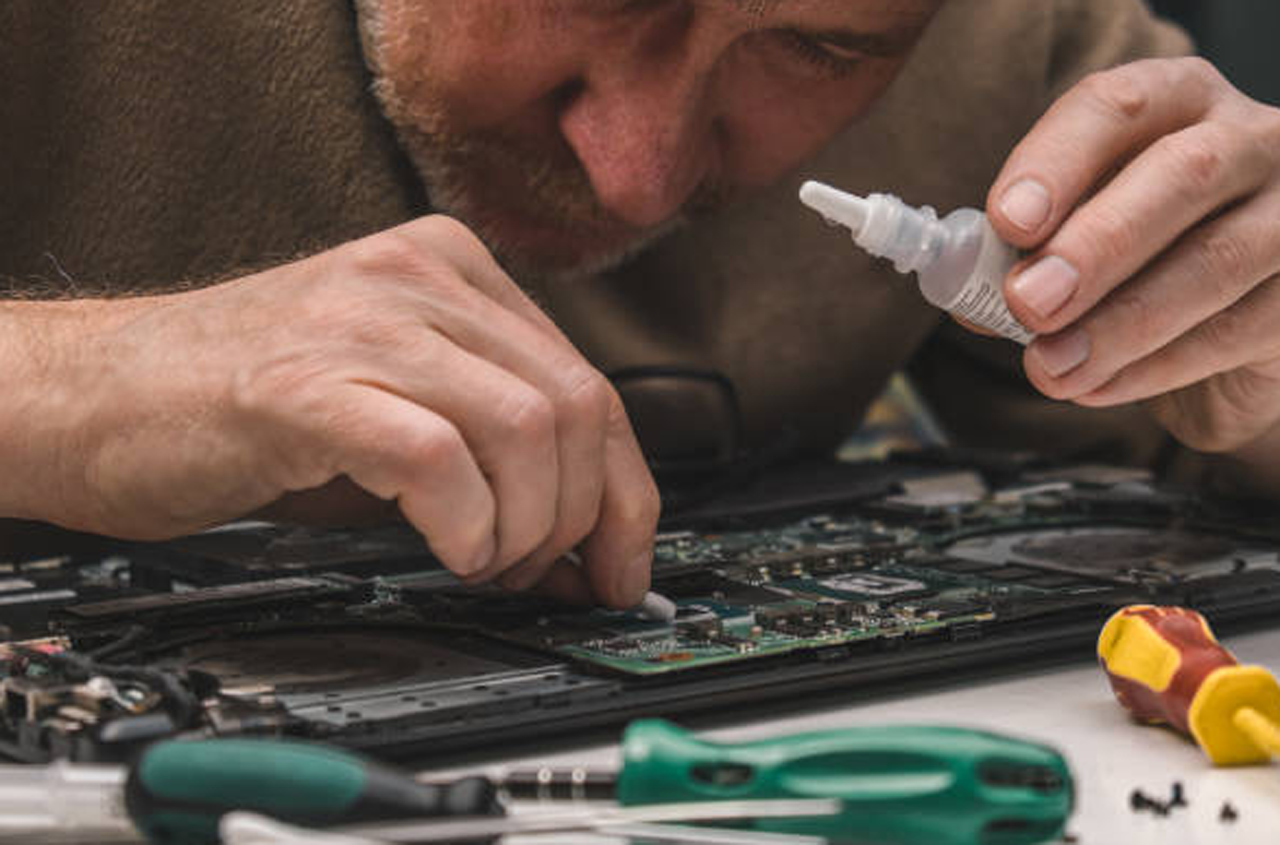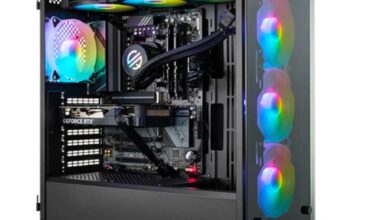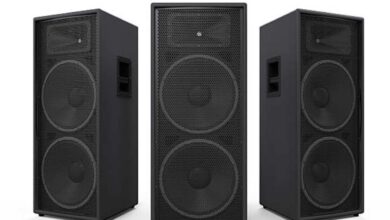 If you’re reading this article on your PC or laptop, take a moment to run your hand near the top or back of your device. You might notice these areas are warmer than the surrounding temperature. You might also hear the device’s internal fan humming away, diligently working to expel hot air and draw in cooler air over the internal components.
If you’re reading this article on your PC or laptop, take a moment to run your hand near the top or back of your device. You might notice these areas are warmer than the surrounding temperature. You might also hear the device’s internal fan humming away, diligently working to expel hot air and draw in cooler air over the internal components.
This constant effort is PC cooling, and it is one of the most critical aspects of any computer’s design to regulate temperature. In this article, we will delve into why PCs generate heat, the consequences of overheating, and the various cooling solutions available. Our goal is to ultimately guide you to choose the right cooling system for your needs.
Why Do PCs Generate Heat?
All materials resist the flow of electricity to some degree. This resistance leads to the conversion of some electrical energy into heat. This is why heat generation is an unavoidable byproduct of computing. (Superconductors, which are materials that can conduct electricity without resistance, are not yet widely applicable, especially in the consumer market, and are not addressed in this article.)
The primary sources of heat within a computer include:
1. Central Processing Units (CPUs) and Graphics Processing Units (GPUs)
Computer CPUs and GPUs perform millions of calculations every second, leading to a significant concentration of heat in a relatively small area. Consequently, they often come equipped with their own dedicated cooling systems, such as heatsinks and fans, to dissipate this heat efficiently.
2. Batteries
In laptops and tablets, batteries are another source of heat. These components store and discharge large amounts of electrical energy, which generates heat in the process. This heat can accumulate if not properly managed, especially in compact devices where airflow is limited.
3. Mechanical Hard Drives
While solid-state drives (SSDs) are becoming the standard for most modern computing applications due to their speed and efficiency, many systems still utilize mechanical hard drives (HDDs). These drives generate heat from their spinning platters and mechanical read/write heads, contributing to the overall thermal output of a system.
Consequences of Overheating
The repercussions of overheating can range from inconvenient to catastrophic. At best, you might face expensive repairs or replacements for your computer. At worst, an overheated system could lead to the failure of other critical components, disrupting important functions and resulting in costly downtime. For instance, a computer in charge of an assembly line could cause serious damage to the entire line if it malfunctions. This is why serious industrial computers use the most reliable and rugged components possible.
When a PC overheats, several damaging events may occur:
- Thermal Throttling: When a CPU reaches critical temperatures, typically around 212 degrees Fahrenheit (100 degrees Celsius), it will automatically throttle, or slow down, its processing to prevent damage. While thermal throttling can temporarily delay overheating, it can also significantly degrade system performance.
- Component Damage: If thermal throttling fails to keep temperatures in check, serious damage can ensue. High heat can cause solder joints to melt, silicon chips to crack, wires, and other hardware to become brittle, ultimately leading to a computer shutdown.
- Data Loss: In extreme cases, storage devices are affected, as overheating leads to data corruption or loss. For businesses reliant on data integrity, this can have severe implications.
Types of PC Cooling Solutions
Now that we understand the heating issue, let’s explore the solutions available. Almost every type of computer integrates some form of cooling mechanism, with the most common solutions including:
1. Air Cooling
Air cooling is the most prevalent type of cooling solution. Simply, air cooling employs fans to blow hot air away from components and draw in cooler air from outside the case. While effective for many consumer-grade PCs, air cooling has its drawbacks:
- Noise: Fans can be noisy, which might be disruptive in quiet environments, such as offices, hospitals, or libraries.
- Reliability: Mechanical fans have moving parts, which can break down over time, leading to cooling system failures.
- Dust Accumulation: Fans can spread dust and microbes throughout the PC’s internals, which can be particularly concerning in clean environments like hospitals or labs.
2. Liquid Cooling
Liquid cooling systems operate similarly to air cooling but use liquid as the medium for transferring heat. Water is one of the most common liquids in these systems.
A liquid cooler is mounted onto the heat source (like the CPU), where it absorbs heat and transfers it to a liquid coolant. This liquid is then pumped away from the heat source, cooled, and returned in a continuous cycle.
The downsides of liquid cooling include:
- Cost: Liquid cooling systems can be expensive due to the need for specialized components and installation.
- Space Requirements: These systems often require more space within the PC chassis, which can be a challenge for compact builds.
- Complexity: Installation and maintenance of liquid cooling systems can be more complicated compared to traditional air cooling setups.
For these reasons, liquid cooling is typically reserved for high-performance applications, such as gaming PCs and dedicated servers, where efficiency and performance are paramount.
3. Fanless Cooling
Fanless cooling, also known as passive or radiative cooling, relies on heat sinks and radiation fins to dissipate heat without any moving parts. A heatsink is attached to the heat source, drawing heat away and radiating it into the surrounding air.
The advantages of fanless cooling include:
- Silence: With no moving parts, fanless systems operate silently, making them ideal for environments where noise is a concern.
- Reliability: The lack of moving parts means there is less risk of failure due to mechanical issues.
- Energy Efficiency: Fanless cooling solutions do not consume electricity to function, which can reduce overall energy consumption.
Fanless cooling is increasingly popular in specialized applications, such as healthcare computers and industrial-grade panel PCs, where reliability and cleanliness are top priorities.
Choosing the Right Cooling Solution for Your PC
Selecting the appropriate cooling solution for your PC depends on several factors, including:
- Usage: If you’re using your PC for tasks that generate significant heat, such as gaming or video editing, you may benefit from more advanced cooling solutions like liquid cooling. For basic office tasks, standard air cooling may be enough
- Environment: Consider the operating environment of your PC. In a quiet office or medical setting, a fanless system may be preferable. Conversely, in a gaming setup where performance is critical, liquid cooling might be worth the investment.
- Budget: Determine your budget for cooling solutions. While advanced systems offer superior performance, they can be costly, so weigh the benefits against your budget constraints.
- Space: Ensure your chosen cooling solution fits within your PC’s chassis and layout. Compact builds may require low-profile coolers or fanless options to optimize space.
Conclusion
Understanding the importance of cooling in computer systems is crucial for anyone involved in technology or computing. From air cooling to liquid cooling and fanless designs, each solution has its advantages and drawbacks, making it essential to choose one that aligns with your specific needs and environment.
As technology continues to evolve, staying informed about cooling options will help you maintain optimal performance and reliability for your PC. Whether you’re a gamer, a casual user, or looking for dedicated industrial-grade hardware, investing in the right cooling solution can significantly enhance your computing experience.






